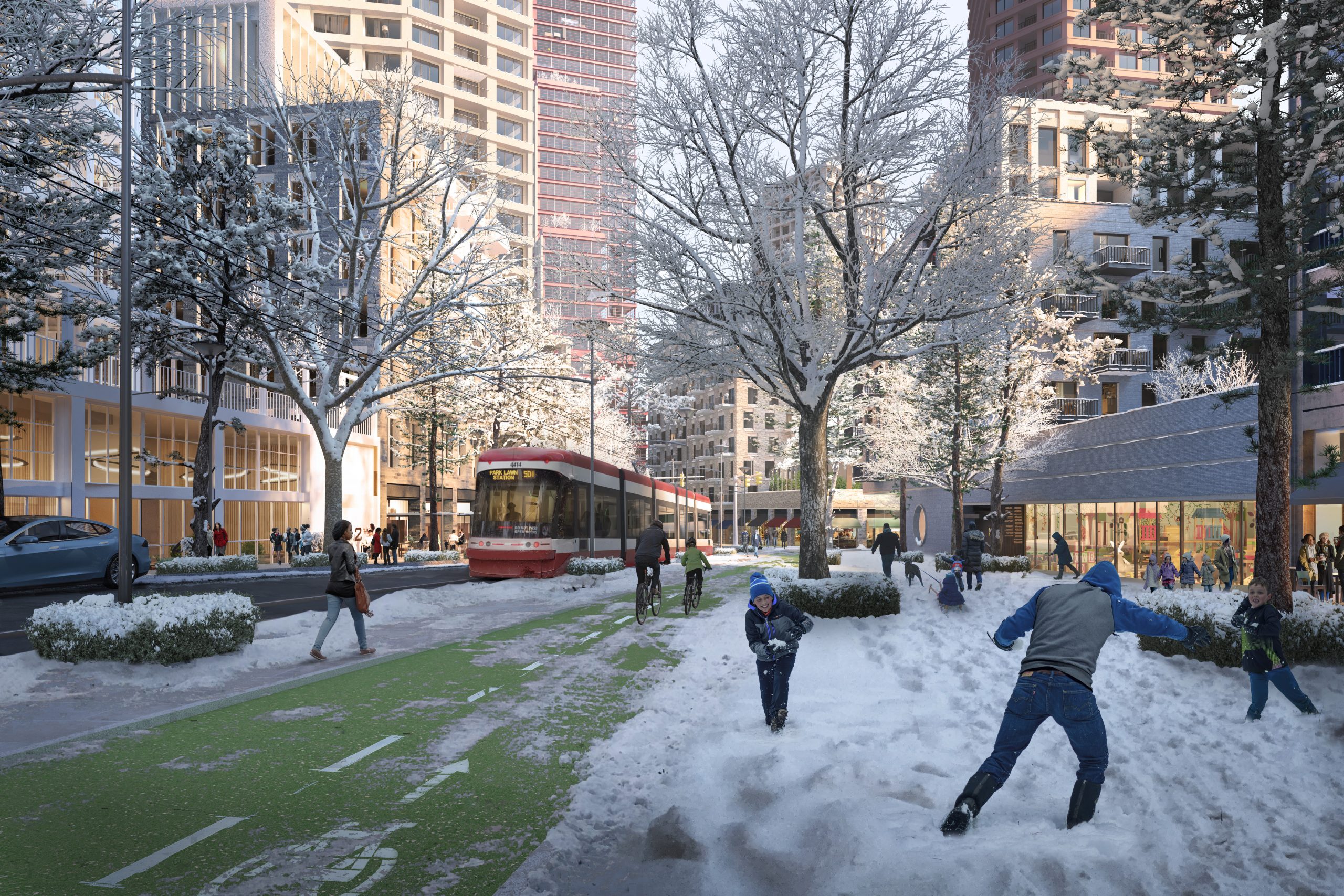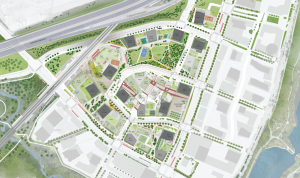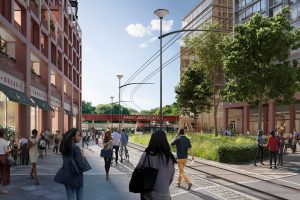Developing a community based on the concept of active transportation isn’t easy – it requires the study of existing transportation challenges, developing solutions on how to address them, and then investing in the necessary infrastructure needed to support the community. It’s a big undertaking, and is one 2150 Lake Shore is prioritizing as part of its Master Plan.
So what does a community supported by active transportation look like? It ensures:
- There are accessible and safe options for residents and visitors to travel to, within, or out of the neighbourhood;
- There is a multitude of ways to walk, bike, and access transit (including GO Transit and the TTC);
- Transit is better connected – reducing travel times, especially for commuters who need consistent, reliable ways to get to work – and affords residents and visitors an opportunity to make sustainable transit a part of their day-to-day lives.
And how is 2150 Lake Shore doing that? For starters, the development will bring significant network and community enhancements to Humber Bay Shores, including:
- Safe cycling routes and connections to established trails and pathways;
- Pedestrian-designed streets and pathways (including wider sidewalks, tree-lined streetscapes, and access to GO and TTC);
- A proposed new GO station and TTC integration for buses and streetcars.
We want to take people out of their cars and put them back in the community while increasing their access to the City, Region, and beyond.
Designing a people-first community
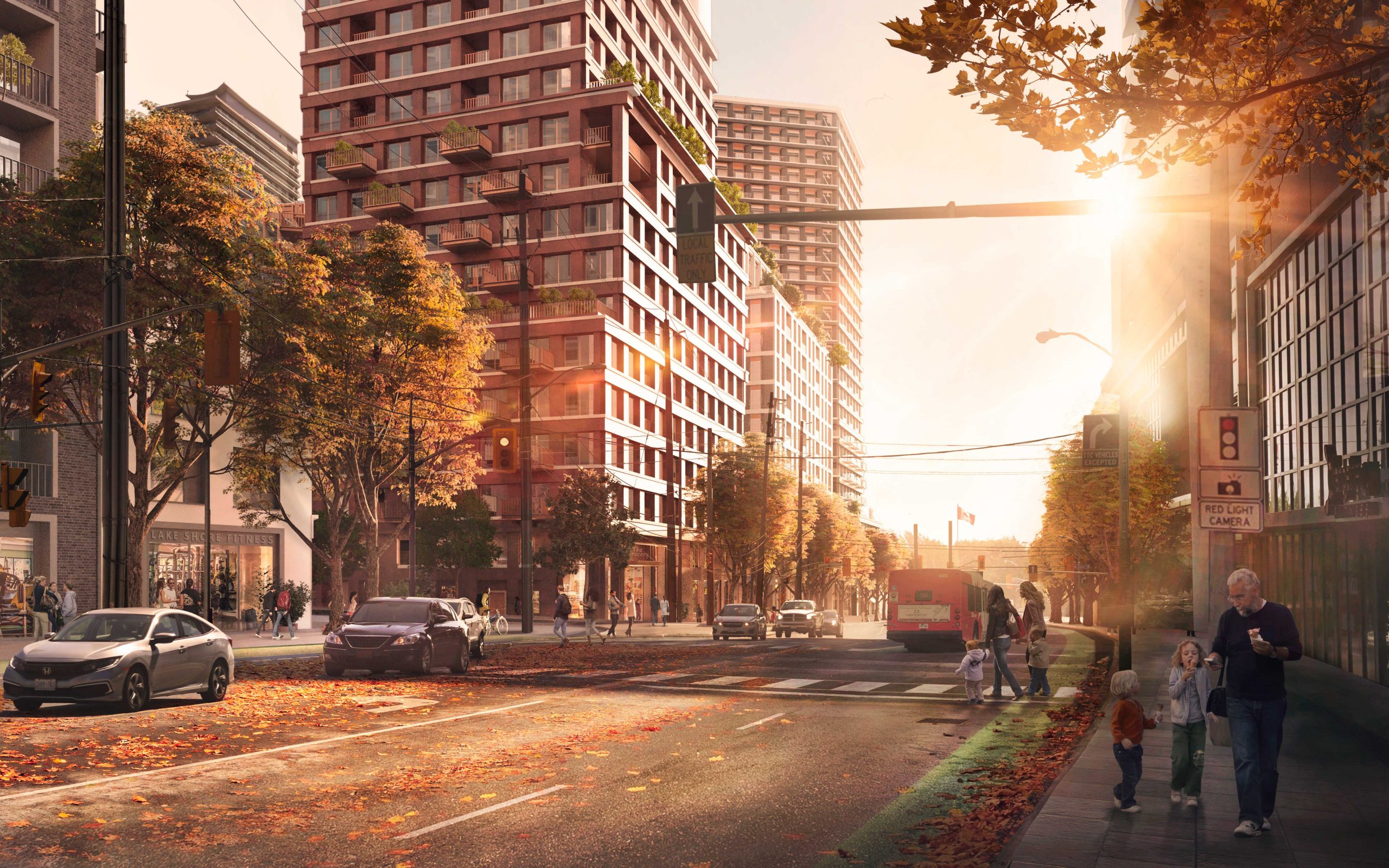
As part of our Master Plan, 2150 Lake Shore is also prioritizing a few things.
We have a focus on pedestrians and cyclists.
- The streets of 2150 Lake Shore will prioritize pedestrians, providing residents and visitors a variety of walkable routes for moving in and around the neighbourhood, including sheltered routes for inclement weather;
- There will be dedicated cycle routes incorporated into Lake Shore Blvd. W. and Park Lawn Rd., connecting to the wider cycle network and key destinations such as downtown Toronto;
- These pedestrian and cycle routes will connect to the neighbourhood’s surrounding trails and pathways, crossing Lake Shore Blvd. to link to the existing Martin Goodman Trail along the waterfront.
Safety and accessibility is top of mind.
- The Master Plan focuses on delivering sidewalks and crossings designed for the safety and accessibility of pedestrians.
- We have proposed traffic-calming measures that will mitigate traffic congestion and ensure cyclists and pedestrians feel safer when travelling on roads and sidewalks.
We believe in building a community that promotes and supports living actively.
- There will be beautifully landscaped, well-connected, and safe streets and sidewalks that will encourage more people to walk and cycle to local destinations.
- Open spaces and green vegetation will extend onto sidewalks to create an enhanced public realm experience and neighbourhood streetscape. Groves of trees will act as ‘parkettes’ where people can gather and stay, sit, chat, eat, drink, and enjoy the neighbourhood.
And we are placing a priority on walkability. See the plans for these new connections by watching our Mobility Video here.
Why live in a walkable neighbourhood?
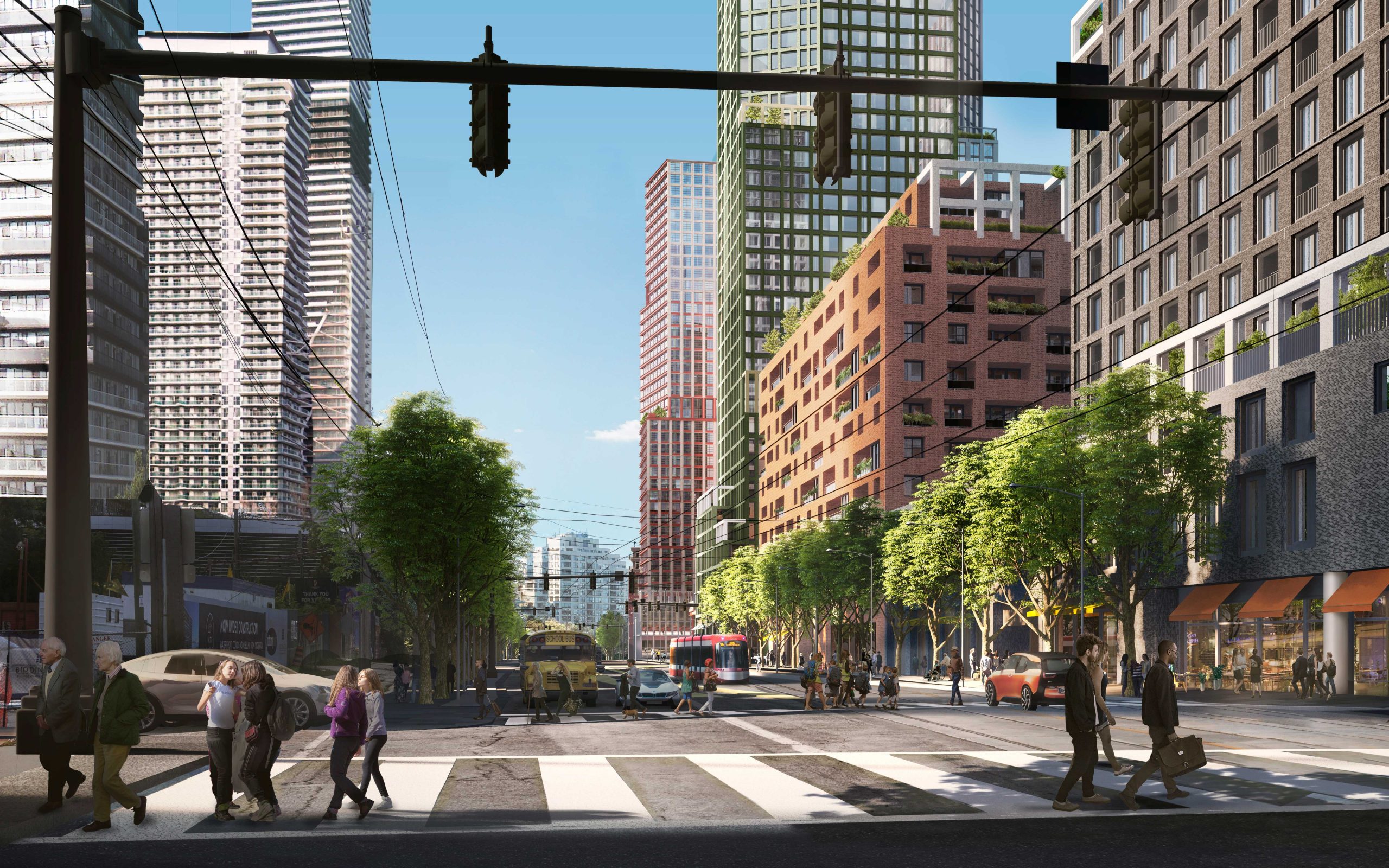
Walkable communities and neighbourhoods that prioritize active transportation have become increasingly important because they:
- Promote walking or biking to nearby amenities;
- Encourage less car usage, which minimizes air and noise pollution;
- Provide greater access to public transportation, shops, and things to do;
- Increase home equity.
Walkable communities and neighbourhoods also:
- Improve physical health: They give people an opportunity to incorporate more activity into their everyday. By walking to and from work, taking a stroll to a local restaurant for dinner or running errands on foot, walking is also one of the easiest and most affordable ways for people to increase physical activity.
- Increase sense of community: Neighbourhoods supported by active transportation give people opportunities to mingle while they work, shop, and dine.
- Boost economic development: These kinds of communities help businesses and the local economy to thrive because more people can walk past the doors of small and local shops, services, and amenities.
Did You Know: With its attractive waterfront location and proximity to downtown Toronto, Humber Bay Shores is one of the City’s fastest growing areas. Want to see what makes HBS so unique and great? Get to know the neighbourhood.
The proposed plans for 2150 Lake Shore Blvd. W. will continue to evolve and grow as we work with the City of Toronto and the local community to address the needs of a rapidly developing area.

